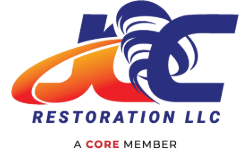When it comes to soot and smoke damage, there’s more than meets the eye. The visible staining is only the beginning—smoke and soot particles penetrate far beyond the surface, leaving behind an invisible film of residue. If not cleaned properly, this residue will continue to cause damage long after the fire is out.
The first step in any smoke and soot cleanup is to identify the type of smoke damage. There are three different types of smoke damage—wet, dry, and protein—and each requires a different cleaning method.
Wet smoke is the most common type of smoke damage and is caused by smoldering fires. Wet smoke leaves behind a sticky, difficult-to-remove residue.
Dry smoke is less common, but no less damaging. It’s caused by fast-burning fires and leaves behind a powdery, flaky residue.
Protein smoke is the least common type of smoke damage, but it’s the most difficult to clean. Protein smoke is caused by fires that involve cooking oils or other proteins and leaves behind a sticky, difficult-to-remove residue.
No matter what type of smoke damage you’re dealing with, the first step is always the same—ventilate the affected area. This will help to remove the majority of the smoke and soot particles from the air and make the cleanup process much easier.
Once the area is ventilated, it’s time to start cleaning. For wet and dry smoke damage, the best way to remove the residue is with a combination of vacuuming and chemical cleaning. For protein smoke damage, the best way to remove the residue is with a combination of vacuuming, chemical cleaning, and steam cleaning.
When it comes to soot and smoke cleanup, the key is to act quickly. The longer you wait, the more damage the residue will cause. So, if you’ve recently had a fire, don’t wait—start cleaning today.
